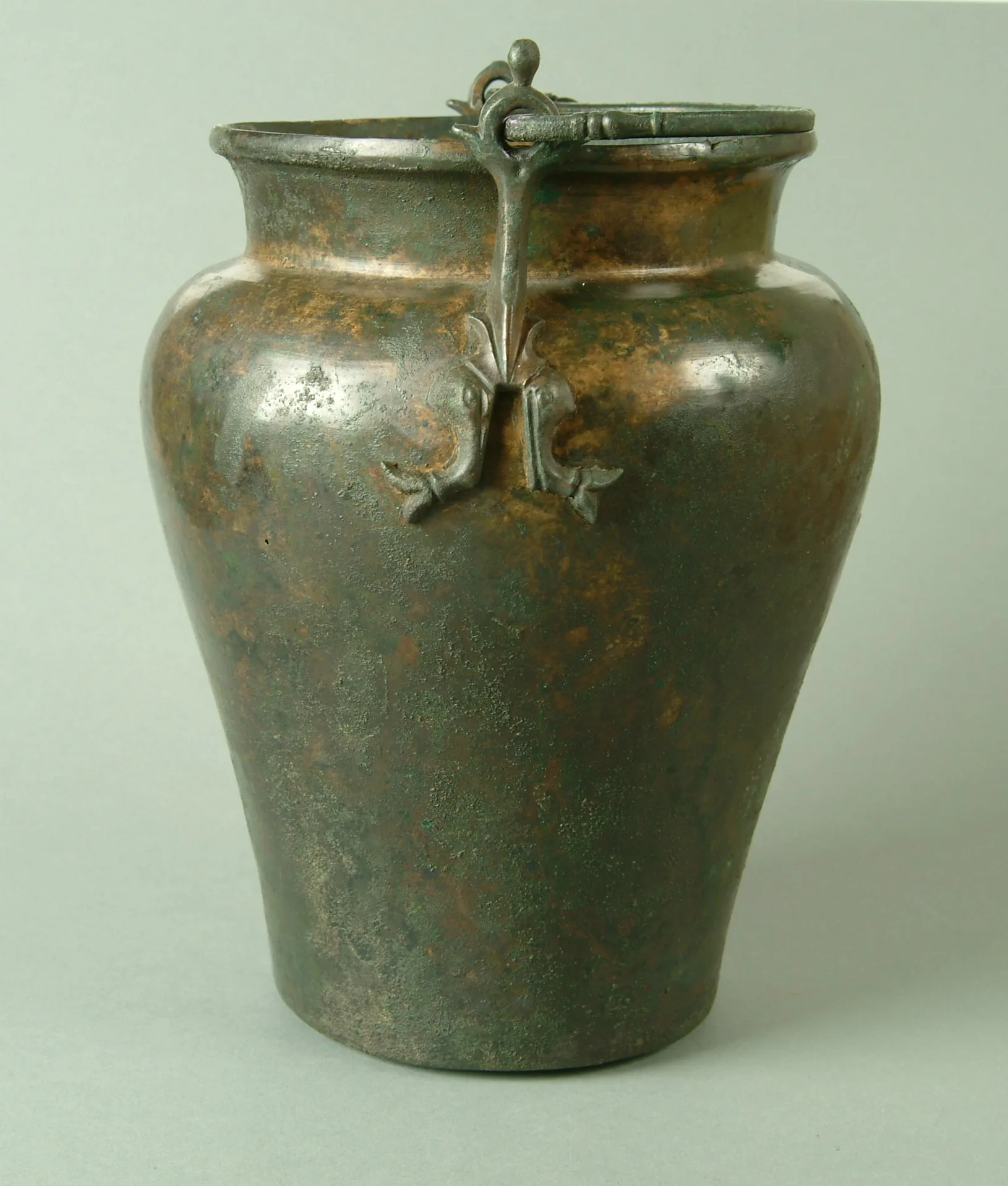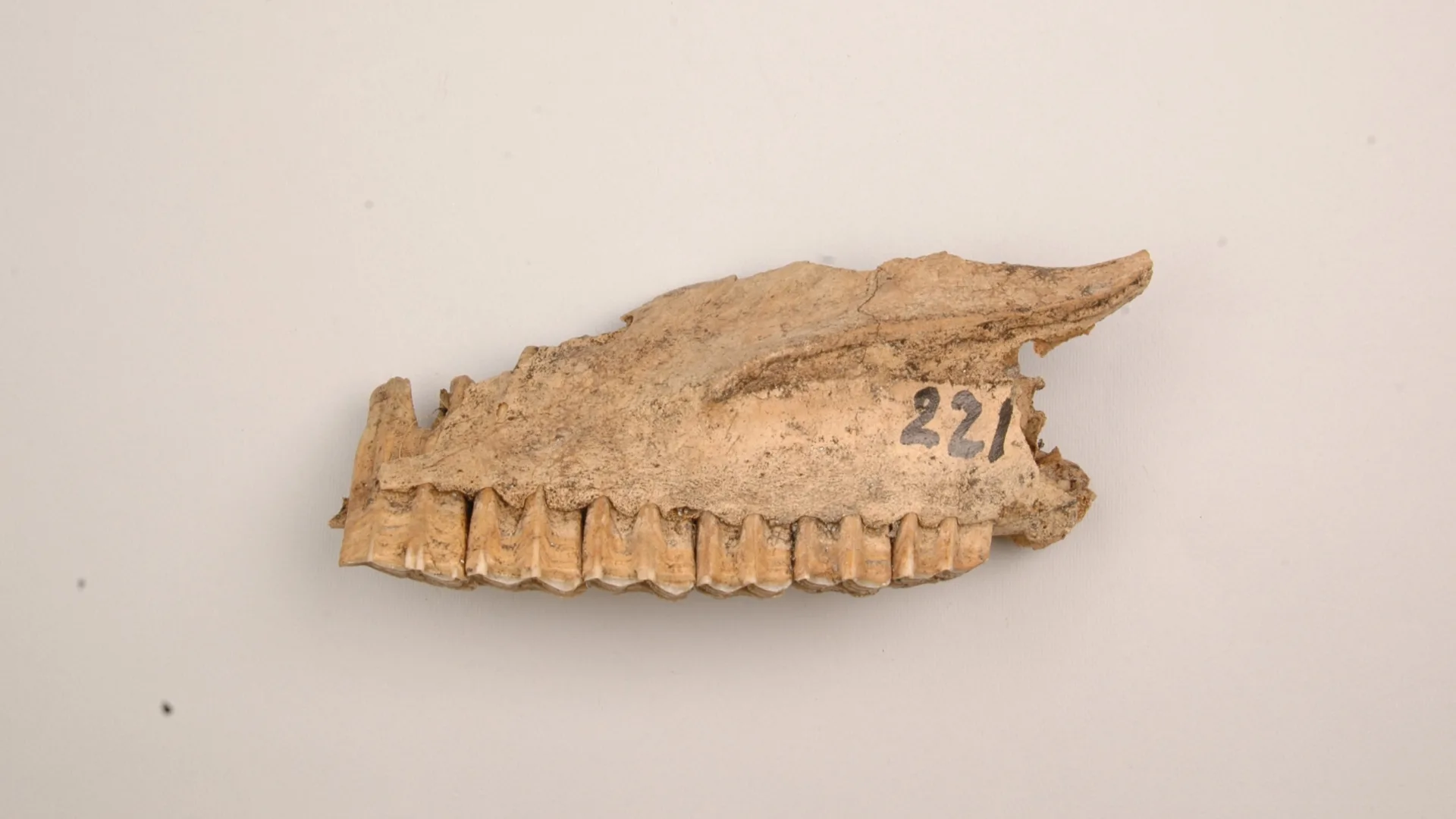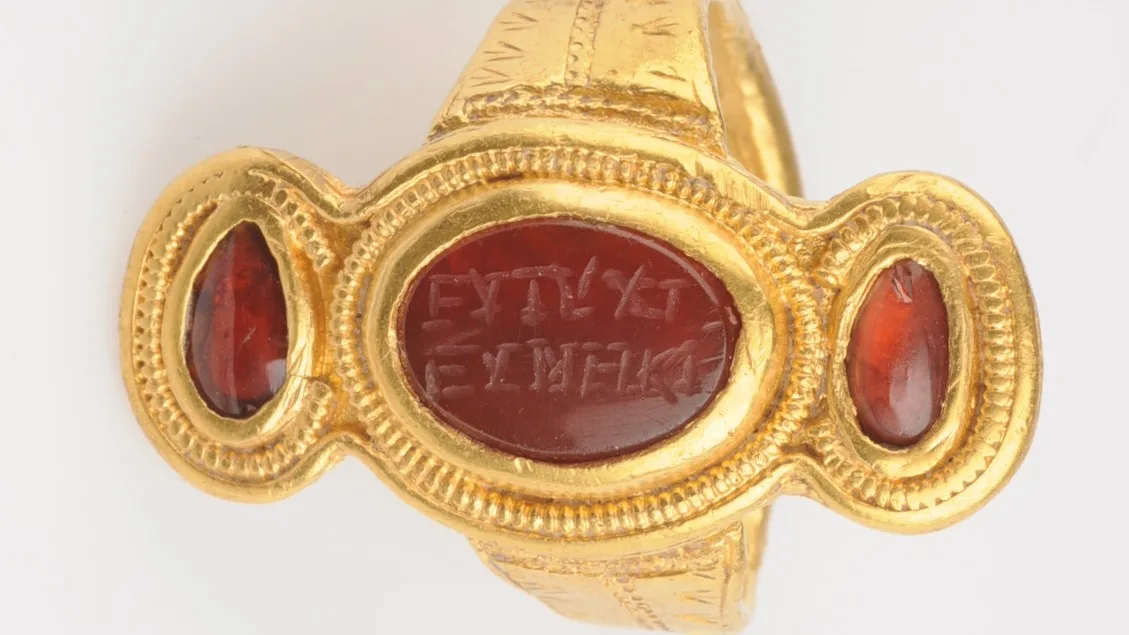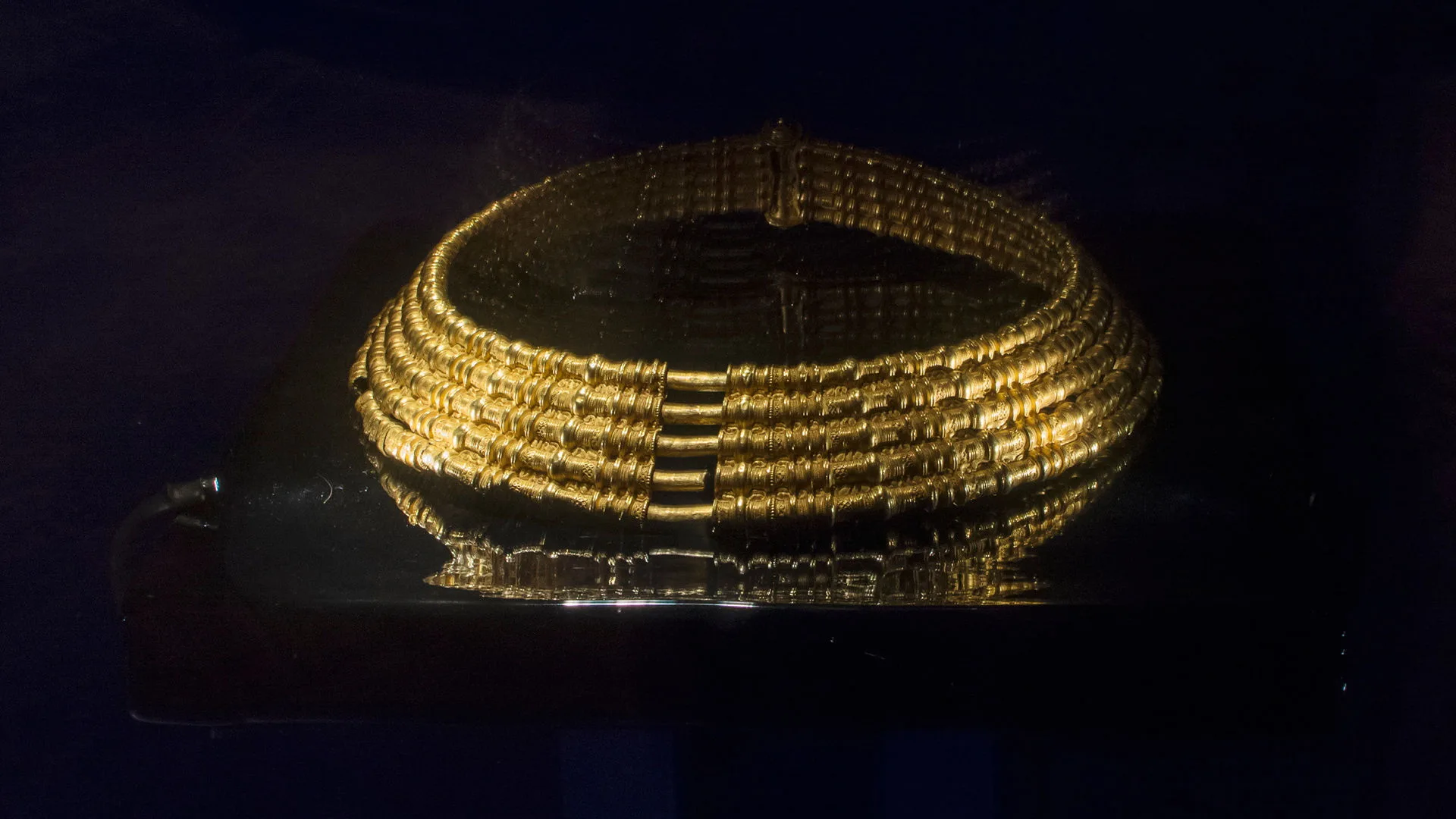The Influence of the Roman Empire
Bronze Age
1700 BC – 500 BC
Iron Age
500 BC – AD 1100
Viking Age
AD 800 – AD 1100
Scandinavia saw the arrival of large quantities of Roman imports, most notably beads and drinking vessels made of bronze and glass. But it was not only physical objects that crossed the Roman border, known as the limes. Ideas and concepts also spread beyond the empire. One example is the adoption of the Roman system of weights in Scandinavia for measuring, for instance, gold. This system was based on the Roman pound and was used throughout both the Roman Iron Age (AD 1–400) and the Migration Period (AD 400–550).
The fitting from Gärdslösa was once fastened to the end of a belt. Its turned, moulded section would have hung downwards.

Belt ornament
A belt with Roman design
Roman influence can also be traced in other ways. One type of strap-end fitting appears around AD 100. These fittings were attached to the ends of belts and are made of bronze, often with an elongated shape that terminates in a strongly profiled section hanging downwards. The upper part was affixed to the leather strap with a rivet. The fitting shown here comes from Gärdslösa on Öland.
To produce such profiling, one would have needed access to a lathe. Perhaps the craft of turning was learned from the Roman world.
It is in this profiled section that we can detect Roman influence. This kind of moulded design was common in the Roman Empire, for example, on the handles of Roman bronze vessels.
Some Roman bronze vessels found in Scandinavia exhibit this same profiling, such as the so-called situla from Isberga in Heda parish, Östergötland. If one looks closely at the end of the handle, it displays a form nearly identical to that of the belt fittings.

Creating such a profile would have required a lathe; without one, manufacturing it would have been nearly impossible. This, too, may have been a technique acquired through contact with the Roman world.
We do not know why local artisans chose to copy the design of a vessel and apply it to an entirely different object. But what is clear is that the skilled craftspeople working in Östergötland and on Öland during the Roman Iron Age were capable of absorbing foreign influences and reworking them into new, original forms. They did not simply imitate; instead, they drew inspiration from new shapes and materials to create something distinctly their own.
This phenomenon can be seen in many areas during the same period. New ideas were not merely admired, they were adapted for objects relevant to daily life.
Thus, the handle of a Roman bronze vessel was reimagined as a strap fitting for a belt, worn by several generations of women during the late first and early second centuries AD. In time, the style faded from fashion, and new forms emerged: shapes rooted in entirely different traditions.





